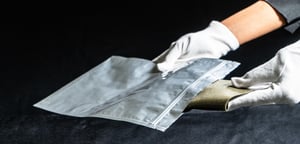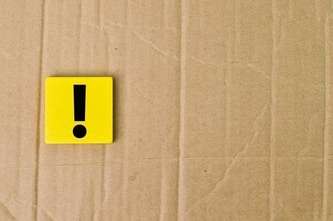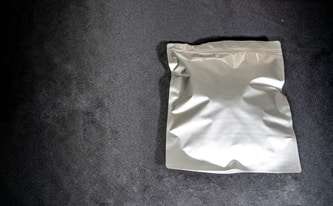5 tips on getting your emissions sample collection and shipping right
Achieving correct results in emission testing can be an unexpected challenge in reality. Every day, suppliers and OEMs ship materials and components in inadequate packaging containing emitting substances. Or, during transport, holes in the packaging cause contamination with external substances, whether dust, CO2 emissions, waste emissions or other influencing environmental factors. As a result, materials can have high emission results that are not originally caused by the material itself. Below is a summary of how to do this correctly.
With these five tips, you will succeed in properly obtaining and shipping emission samples.
Content
- Tip 1 - Sample collection, storage, sample history
- Tip 2 - Sample packaging and preventing contamination
- Tip 3 - Sample quantity for material and individual part measurements
- Tip 4 - Sample quantity for component parts and semi-finished products for component parts chamber emission tests
- Tip 5 - Sample shipping and accompanying letter
Tip 1 - Sample collection, storage, sample history
The following aspects should already be taken into account during collection. Pack the representative samples promptly, typically within eight hours of the manufacturing process, in aluminum composite foil airtight. In addition, the sample history, including date of manufacture and packaging, must be known and should be provided to the testing laboratory. The precise instructions of the automobile manufacturer must be followed. These can be found in the relevant technical regulations (e.g. Daimler DBL 5430, VW 50180, Porsche PN 780, BMW GS 97014-2, BMW GS 97014-3, GMW16853).
Tip 2 - Sample packaging and preventing contamination
The choice of packaging material is particularly important. Only aluminum composite foil in accordance with DIN 55531 type 1 should be used to package the samples. Foil sealing tongs or, if necessary, a conventional iron are suitable for sealing the foil. Suitable foil or foil bags can be ordered, for example, at www.imat-shop.de.
To prevent contamination of the samples, they should not be touched with bare hands. Ideally, use clean cotton gloves. Labels directly on the samples cause contamination and should therefore be avoided urgently. Of course, stickers on components and material should also be avoided as they contain emitting adhesives. Any heating of samples outside the manufacturing process should be avoided. Do not expose the samples to direct sunlight. If possible, store the samples at room temperature at 23°C ± 2°C.
 Tip 3 - Sample quantity for material and individual part measurements
Tip 3 - Sample quantity for material and individual part measurements
This tip applies to standards such as VW 50180, DBL 5430, PN 780, GS 93008-4, GMW16853 with the material tests based on e.g. VDA 270, VDA 278, VDA 277, VDA 275, DIN 75201. Material and individual part measurements require a minimum weight of approx. 250 g or a minimum surface area of 2 x DIN A3, i.e. approx. 29.7 x 42.0 cm, per test sample variant. It is therefore recommended to ensure that a sufficient quantity of samples is provided, as otherwise test processes can be unnecessarily extended, for example due to subsequent shipping.
Tip 4 describes the procedure for components and semi-finished products for component chamber emission tests.
 Tip 4 - Sample quantity for component parts and semi-finished products for component parts chamber emission tests
Tip 4 - Sample quantity for component parts and semi-finished products for component parts chamber emission tests
These guidelines apply to standards such as ISO 12219-4, VDA 276, GS 97014-2, GS 97014-3, PV 3942, or VCS 1027,2769, among others. Emission chamber testing of components and semi-finished products requires at least 1 kg of a three-dimensional material or at least 1 m² of a two-dimensional material per 1 m³ of chamber test space. Parts and components are usually tested as a vehicle set, i.e. the test quantity corresponds to the product scope used in a vehicle.
The components to be tested should be completely assembled and unassembled vehicle parts. If the load of 1 kg per 1 m³ is not achieved with only one vehicle set, several vehicle sets should be used to qualify the minimum ratio of 1 kg/m³ of sample mass to chamber volume. The exact instructions of the vehicle manufacturer must be observed and can be found in the relevant technical regulations, e.g. DBL 5430, VW 50180, PN 780, BMW GS 97014-2, BMW GS 97014-3, GMW16853.
Paint films and adhesives must be prepared according to the specifications and in consultation with the responsible specialist department of the automobile manufacturer. Films cured under process conditions in application film thickness are tested. Typically, for a test, e.g. according to VDA 278, aluminum foil is applied. The basis weight of the coating material must be submitted with the sample.
In addition, a sufficient quantity of the non-coated substrate material must be included. Depending on the application and technical specification, adhesive samples can be applied between two aluminum foils.
 Tip 5 - Sample shipping and accompanying letter
Tip 5 - Sample shipping and accompanying letter
For fast processing of test orders, it is helpful to enclose an accompanying letter with information on the order (order, sample shipping bill, quotation number) when shipping the samples. At the latest with the shipment of the material samples, individual parts, semi-finished products or components, a pre-filled data sheet must be sent, if necessary, depending on the applicable technical regulation (e.g. BMW HC data sheet for GS 97014, Porsche emissions table for PN 780, DBL 5430 supplement 4). For the GS 97014-2 test, the total displacement volume of the test sample must also be provided.
Do you have further questions?
Our leading team of experts for emission testing will be happy to advise you.





